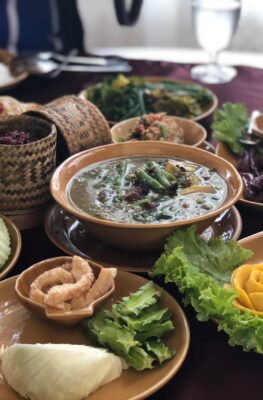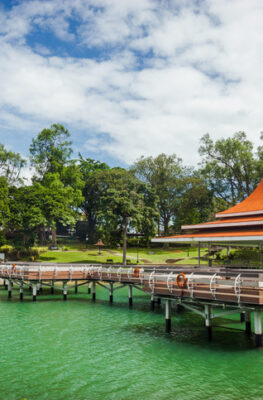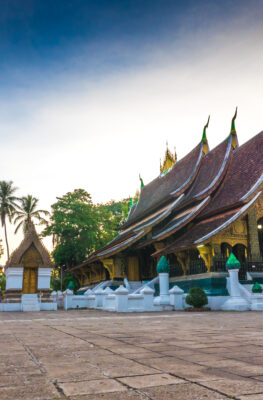Published on July 11, 2015

Walking tour of Intramuros, Philippines. Image © Mike Aquino, used with permission.
You won’t see the best of Southeast Asia unless you get down off the tour bus.
Can you imagine seeing Bangkok without exploring the street food stalls? Or admiring the churches in Manila without exploring the sidewalks around them? And what can you see of Yogyakarta if you don’t walk through Malioboro or the Kraton?
Consider this your invitation to ditch the bus-driven tours for something a little grimier, a little slower but a lot more personal and in-your-face: walking around Southeast Asia’s cities can be the best way to see into the heart and soul of your chosen destination.
The Philippines capital of Manila is hardly known for its pedestrian-friendly walkabouts, but some especially historic streets are particularly rewarding for visitors on foot. Start with the nucleus of historic Manila, the walled city of Intramuros. Originally a Spanish enclave from which the conquistadores ruled the islands, Intramuros retains an Iberian feel due to its partly cobbled streets, narrow lanes and key structures like the Manila Cathedral and Fort Santiago.
The Chinese enclave of Binondo, situated across the river, is better known for its stone church (note the octagonal bell tower, built to resemble a Chinese pagoda), but the streets leading away from the church reward walking tourists with visits to no-name noodle stalls, encounters with feng shui masters, and an intimate look into Asia’s oldest Chinatown, bar none.
For Yangon in Myanmar , years of isolation may have been a blessing in disguise. The city contains one of the region’s finest collections of British colonial architecture, spared from destruction over the 20th century. Most of these have been gazetted into the Yangon City Heritage List, saving them from the wrecker’s ball.
In a 5km walk around the city centre, you’ll encounter historical buildings like the Minister’s Office, the site of General Aung San’s assassination; Saint Mary’s Cathedral; the old railway station; and Botataung Pagoda. Some of these buildings remain favorite watering holes for visitors – you can still enjoy high tea at the Strand Hotel, the way foreign visitors have done for almost a century; and you can still toddle over to the old Red Cross Building for a gin and tonic at the Union Bar and Grill.

Shopping on the streets of Bangkok, Thailand. Image courtesy of Tourism Authority of Thailand.
The city of Bangkok, Thailand offers a variety of stories that differ depending on the street corners you decide to walk through. The Grand Palace and its immediate neighborhood, for example, contains buildings that reveal the highest aspirations of the nation, from the Thammasat and Silpakorn Universities to the most sacred Buddhist temple in Thailand, Wat Phra Kaew.
Bangkok’s Chinatown is far grittier, but offers a far more intimate look at the city at street level: a few hours exploring the district will bring you face to face with the endless food options along Yaowarat Road; the sights and smells of the markets along Wanit Road and Trok Itsaranuphap; and surprising architectural finds like the Thai-European Bangkok Bank building.

Walking tour of the Kraton in Yogyakarta, Indonesia. Image © Mike Aquino, used with permission.
Visitors to Yogyakarta, Indonesia will find the city’s true character laid bare in a straight-line walk from the Tugu Train Station to the Kraton (Sultan’s Palace). Jalan Malioboro immediately follows the train station, and immediately overwhelms you with an endless selection of cheap shopping and aromatic street food selections.
At the midpoint of your walk, you’ll encounter Pasar Beringharjo, Yogyakarta’s central market – your first choice for batik, spices and other low-priced sundries. The rest of the walk will reveal Yogyakarta’s history enshrined in architecture – the Dutch Fort Vredeburg; museums like the Sonobudoyo Museum and the Museum Kareta Kraton; and the Masjid Besar, Yogyakarta’s central mosque. Conclude your walking tour with a visit to the Kraton, or the Sultan’s palace, where you’ll get a taste of high Javanese culture that exists nowhere else.






